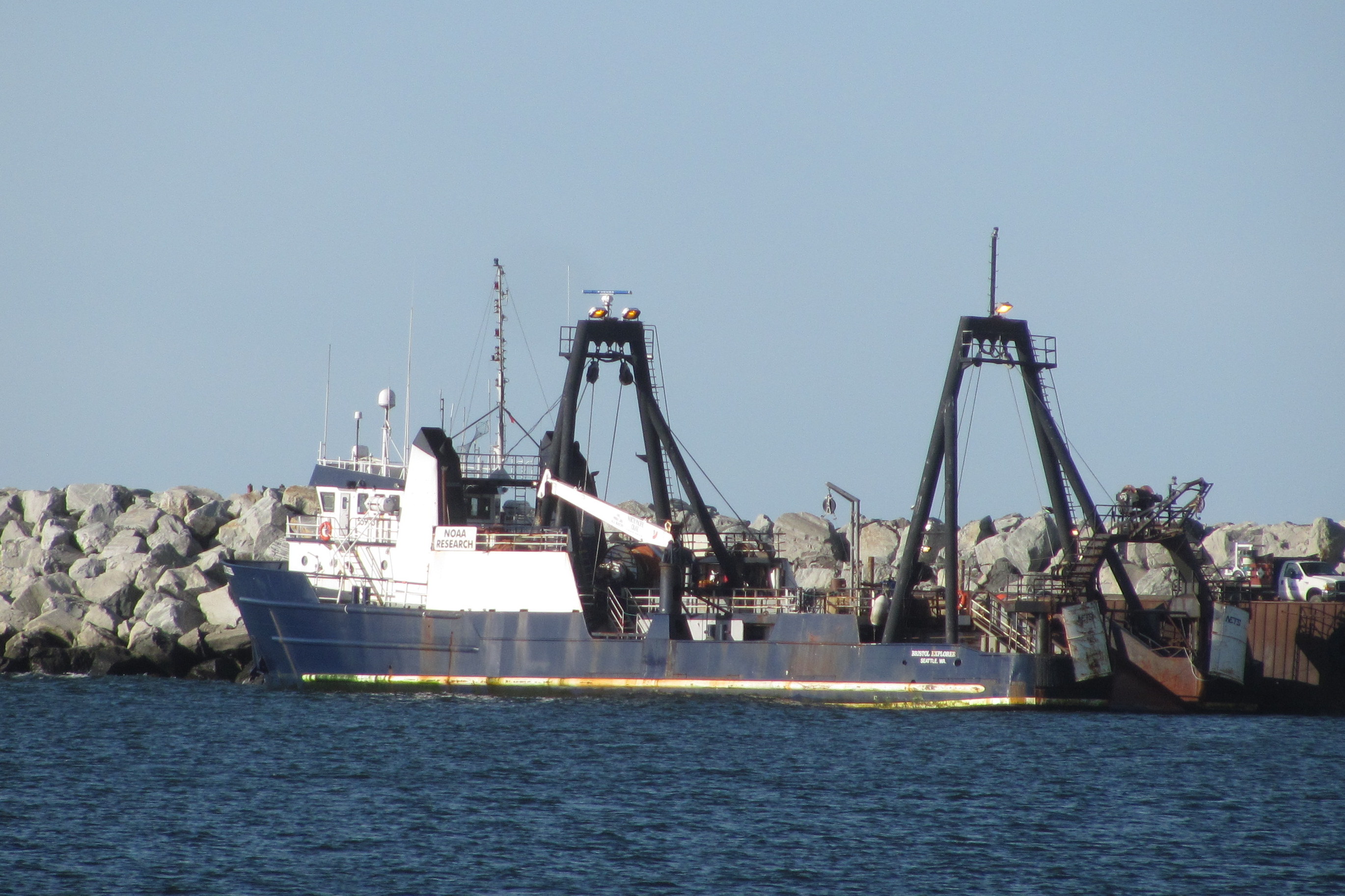We’ve discussed in the past how important teamwork and collaboration is for research. Ship-based research is often an extreme example of collaborative work.
Ship-time is incredibly expensive (it can cost over $20,000/day to charter a large research ship), and the focus of the research is often large ecosystem questions that require the expertise from many different disciplines.
Here, Catherine Pham introduces the talented team involved in the Arctic Eis project:
The Arctic Ecosystem Integrated Survey (Arctic Eis) project is a collaborative project between multiple research groups. Its overall goal is to improve understanding of the potential effects of climate change, energy exploration, and other human activities on the northern Bering and Chukchi seas through integrated research. This was accomplished through comprehensive surveys of the region’s oceanographic properties, plankton, fish, and seabird communities.
The data was collected in August and September of 2012 and 2013 onboard the F/V Bristol Explorer (see photo above). Each year’s research cruise was broken up into three legs, with stops in port between each leg to switch out crew members, refill food stocks, and perform boat maintenance.
What did the science team on those cruises look like?
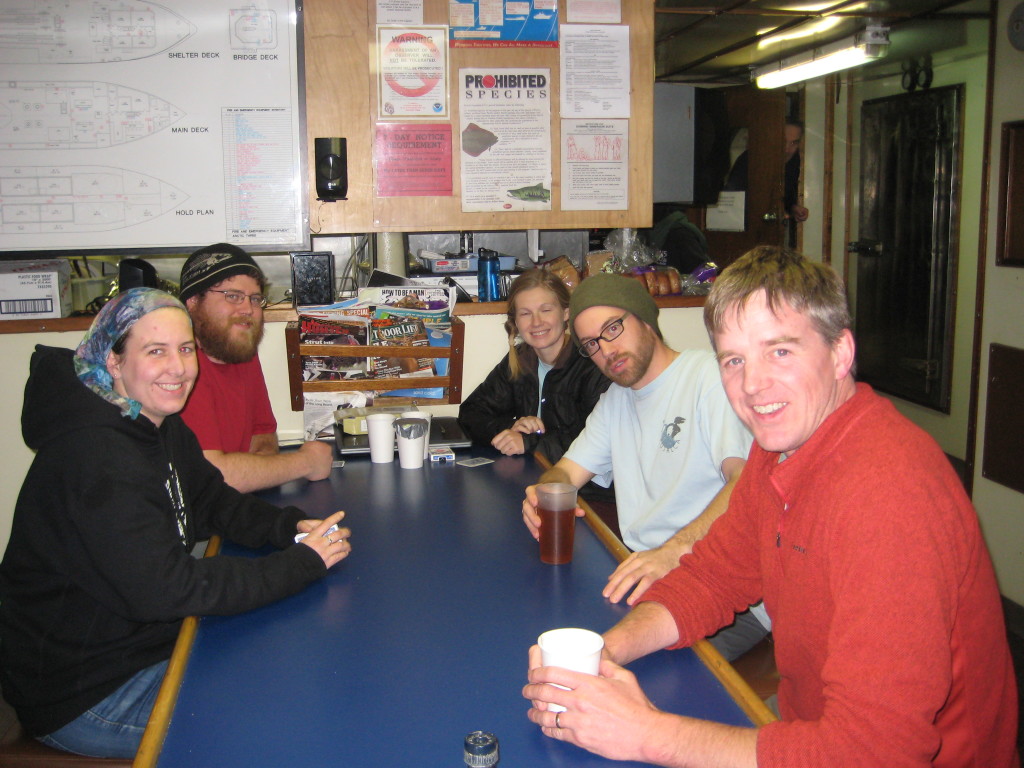
Science Crew in the Gallery: photo by Stacy Vega
The chief scientist is in charge of leading the science crew and managing the research operations, in addition to their own research needs. The rest of the science crew consisted of various combinations of oceanographers, planktonologists, ichthyologists (fish biologists), fisheries scientists, acousticians (scientists who use sonar to detect and record the occurrence of zooplankton and fish in the water column), and a seabird observer, for a total of 6 or 7 science crew onboard at all times. Each of us were responsible for managing our own data, and all of us pitched in to help each other whenever needed (I particularly enjoyed helping sort the fish catch).
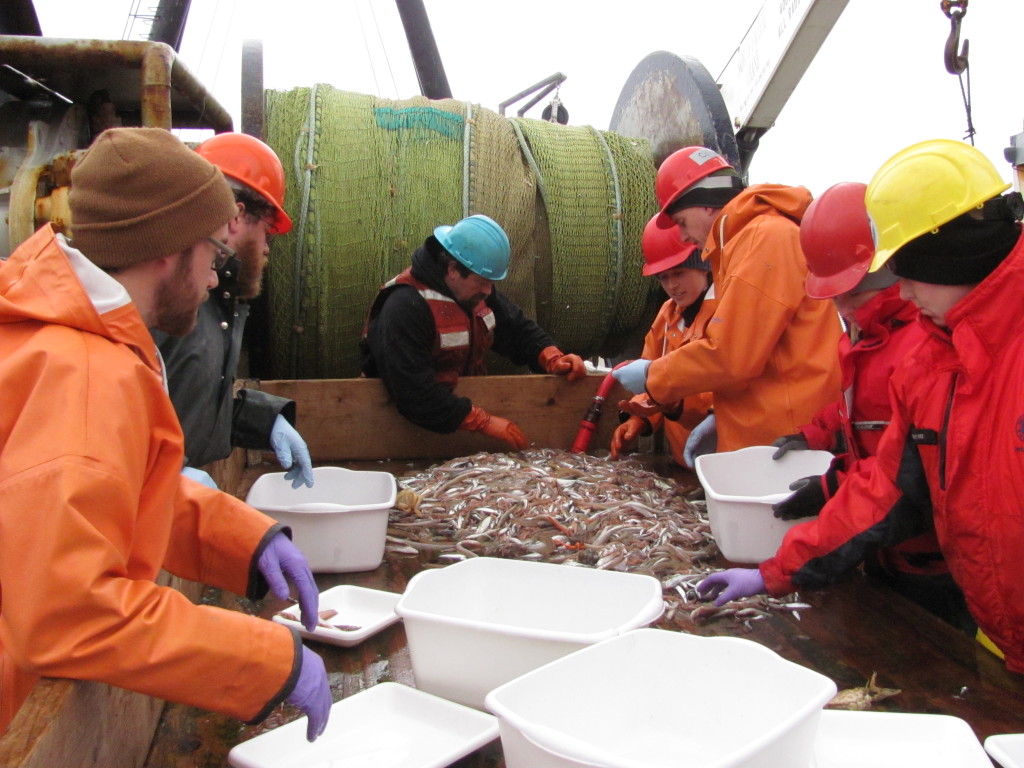
Sorting fish catch: photo by Catherine Pham
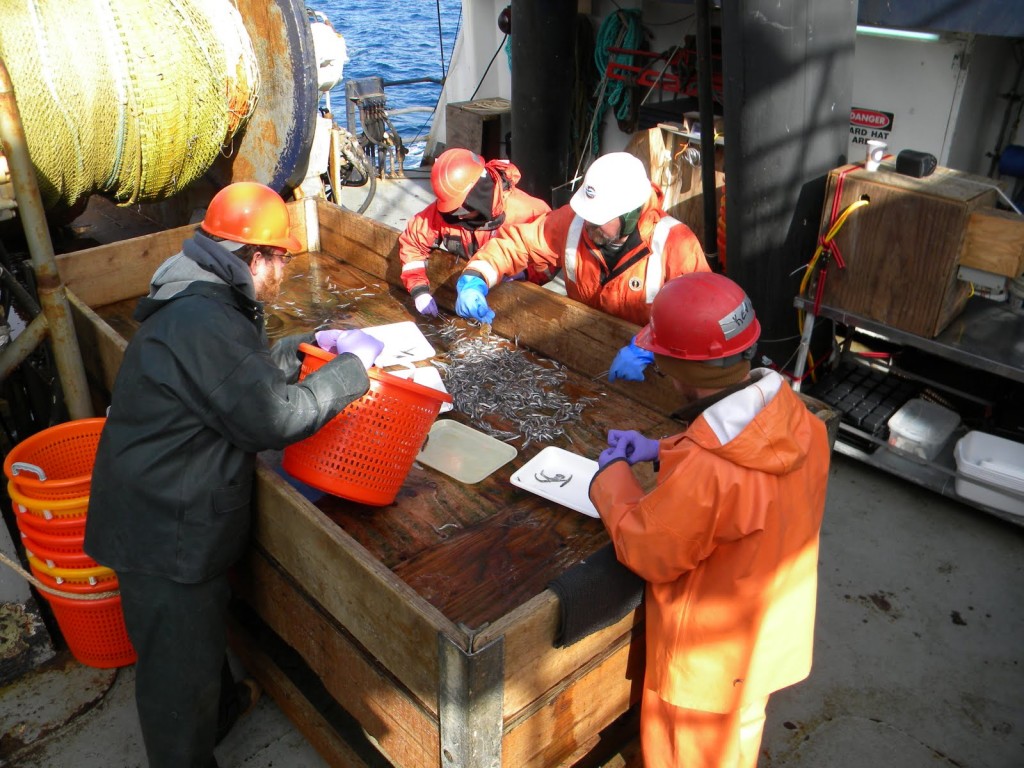
Sorting a fish catch: photo by Melissa Prechtl
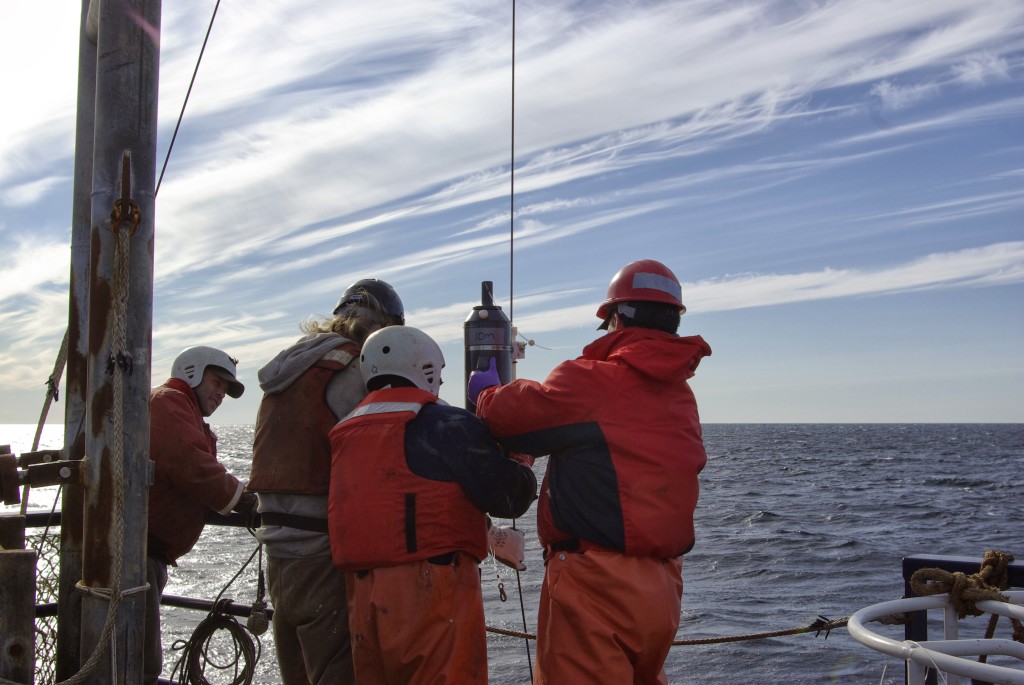
Boat and science crew attaching Niskin bottle to winch line: photo by Stacy Vega
Few scientists stayed onboard for an entire cruise, with many staying for only one or two legs of each cruise. Sometime while watching Star Wars, filtering water samples, making piñatas, and counting birds, we learned to live and work with each other’s quirks, and became quite close despite the lack of privacy and wide range of personalities. That sense of camaraderie made it easy to take the good days (when everything goes smoothly) with the bad days (bad weather, lost or broken equipment). A total of 21 scientists worked on the cruises, and many more were involved with the research in some capacity. You can learn more about all the scientists on the Arctic Eis website.
The scientists would not have been able to do science without help from the boat’s crew.
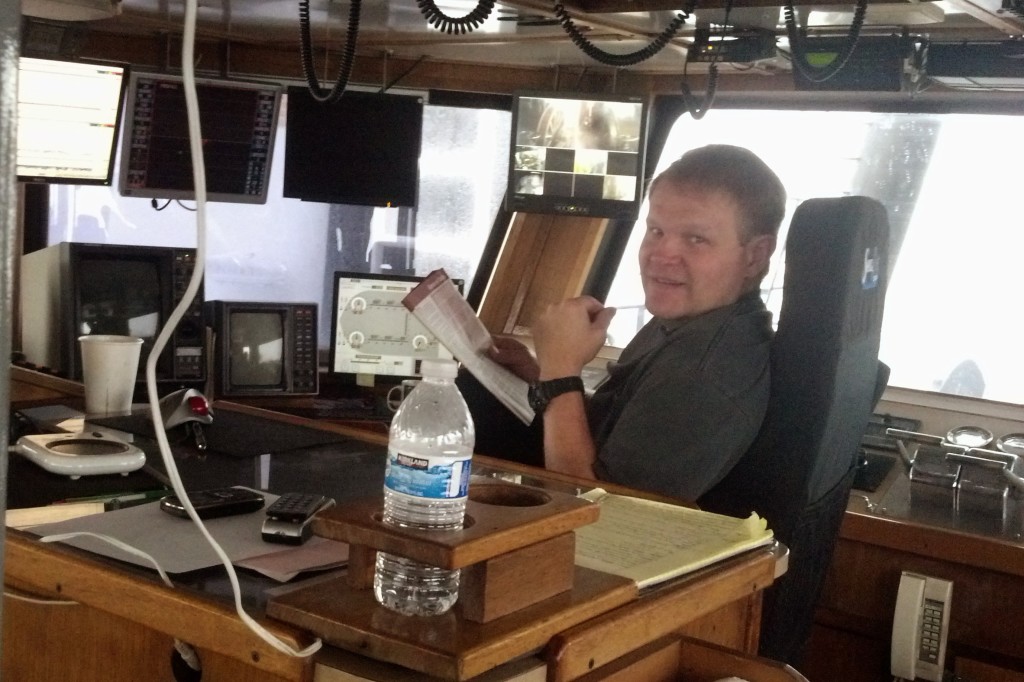
Captain Brian: photo by Kevin Taylor
The Arctic Eis cruises were conducted onboard the F/V Bristol Explorer. This boat is actually a fishing vessel that was chartered for the Arctic Eis research cruises. The boat’s crew consisted of the captain, mate, engineer, steward, and three deckhands. The captain and mate are responsible for managing all boat operations and making sure the scientists’ needs are met in a safe manner. The engineer maintains the boat’s engine and keeps the boat running properly. The steward runs the galley, cooks for everyone, and makes sure that everyone’s dietary needs are met. The deckhands help the scientists run their equipment, and are also responsible for boat maintenance, assisting the engineer, manning the lines for docking and undocking, and many, many other tasks. Like the science crew, some of the boat crew rotated out between cruise legs.
Behind the people, there is the funding that pays for the science to be done.
Research cruises, scientific equipment, and time are all expensive, and scientists pay for those through various funding sources. The funding for the Arctic Eis project comes from several organizations and agencies, including the Bureau of Ocean Energy Management, the Alaska Fisheries Science Center, and the U.S. Fish & Wildlife Service.
Thanks to all the people and funding groups who made the Arctic Eis project possible!

